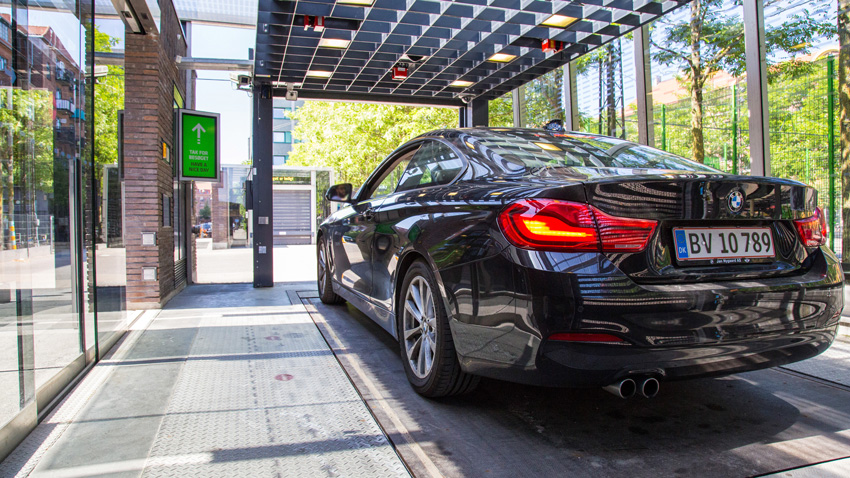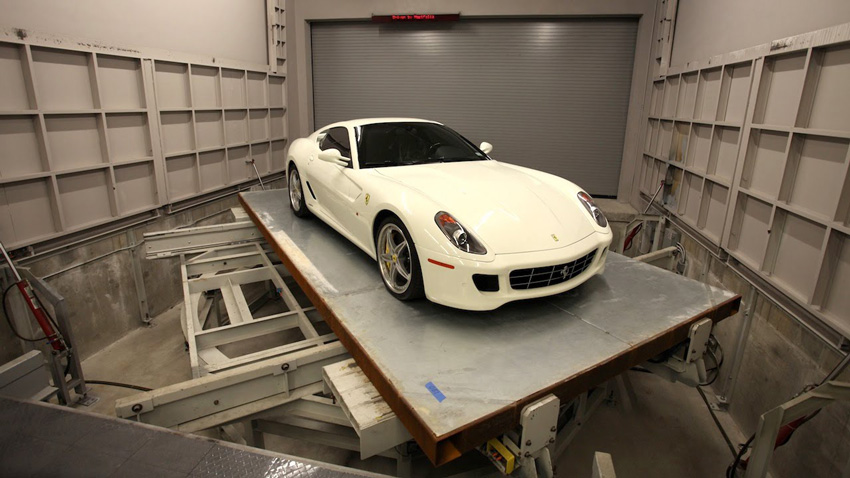The Evolution of Parking
Additionally, as users do not enter the garage, developers can achieve lower upfront ventilation equipment costs due to the reduced requirement of only two air changes per hour, as opposed to the four to six changes per hour required in a typical parking garage.
And because the users won’t be able to enter or see what’s going on within the system, developers don’t need to put as much emphasis on the parking areas through passenger lifts and stairwells or the overall finish of the garage. These add up to cost savings that go directly back to the project’s budget.
Automated parking garages typically run in a lights-out environment, so electricity usage is drastically reduced, and lighting costs are minimal. This savings helps offset the cost of the electricity needed to operate the parking system’s equipment.
While cost savings over traditional parking garages is important when evaluating an automated garage for a project, possibly the most important factor is the potential added value an automated parking garage can provide to a development.
Operating Cost Savings
The whole- life or life-cycle cost (LCC) savings is something that is often overlooked when developers are considering an automated parking garage for their developments. There can be substantial LCC savings when compared to conventional parking—although there will also be differences in the potential LCC savings between different automated systems. One study in the National Parking Association’s Parking Magazine showed potential savings in operating costs of an automated parking garage compared with a conventional garage of over 50 percent.4
A large potential saving is in valets or operator salaries, insurance, HR, hiring, and benefits costs, as they are typically not required in an automated garage.
Although preventative maintenance plans are recommended for the equipment, ongoing maintenance costs are reduced because there is no parking area to maintain for users. And there are no consumer lifts to maintain.
Finally, developers can also see savings through the accelerated depreciation of the automated parking system equipment capital cost; the asset can be depreciated much quicker than a conventional garage.
Finding the Right APS Vendor
There’s no doubt that an automated parking system is very complex. Specifiers would be wise to choose a turnkey vendor that can guide the process from conception to ongoing operation. A partner who controls the entire process ensures a better outcome than outsourcing various elements to the lowest bidder.

Photo courtesy of Westfalia Logistics Solutions Europe
Because of the complex nature of automated parking garages, the designer, owner, developer, or operator should consult with an experienced and successful vendor.
Initial discussions with an APS vendor should conducted as early as possible in the design process to maximize the operational and space efficiency of an APS. Early in the process an architect should send a vendor the project plans and specify the number of parking spaces required, the development type of the project, the expected vehicle throughput of the project, expected retrieval times of the vehicles from the system and any other pertinent information that may be useful for a vendor to design the optimal system with the architect.
A vendor may manufacture several different types of APSs and can use its experience and expertise to determine which system type works best for each project, or even provide differing design solutions for each project that can be discussed with the architect.
As important as the machinery is the software to run it. Again, engaging a vendor with a track record of installing glitch-free software is recommended. Ask for references and visit past installations if possible, for a hands-on experience of such a system.
Maintenance on equipment and the software should ideally be performed by the same vendor that designed the system, sold the equipment and software, and did the installation. In this way, deep inside knowledge of the system and ongoing support will be in place, including technicians available around the clock. The cost of any support services agreement (SSA), or maintenance agreement, should be discussed before selecting a vendor as this is an import element of the overall costs and could have an impact on the system’s performance too. Details of the services that will be provided under the agreement should also be discussed so there’s a clear understanding of what will be delivered and a comparison with another vendor’s SSA can be conducted.
Things to consider when selecting a vendor:
- Track record. Check if the vendor has a track record in delivering fully automated systems that have been operational for several years to determine their reliability?
- Office and manufacturing location. Is the vendor’s office close enough to allow for smooth coordination during the design and procurement phases between the design team? Is the manufacturing done in a location that provides the necessary quality.
- System quality and reliability. Can the vendor provide sufficient reliability and quality data from previous installations/manufacturing processes to back up any claims it’s given?
- Service and maintenance. Does the vendor have the resources and skills to ensure the system’s hardware and software will operate reliably for the next 20 or so years?
Know the parts of the whole
There are many other basic considerations architects need to understand and evaluate during the process of specifying an automated parking system and selecting the most appropriate vendor. Most of these considerations should easily be answered by the vendor, but a basic understanding of the concepts will help ensure the project goes smoothly.
- Electrical requirements. Automated parking systems may have additional or special electrical requirements depending on the type of equipment installed. Be sure to discuss the electrical power needs with your vendor and communicate this information to the building team.
- Space requirements for different systems. While it is estimated that automated parking systems can save up to 50% of the available space when compared to conventional parking structures, it is important to discover if equipment will need any additional area to operate. Additional space could be needed or moving parts, safety requirements, maintenance needs, and inspection.
- Fire code specifications for APS. Each area and municipality likely will have specific fire code specifications in place that address parking garages. It is important to know that these requirements may not be the same for automated parking systems, and an architect should research and document local codes to determine the requirements in their area.
- Maintenance and service. When specifying a vendor it is inspect and evaluate the service contract the vendor will provide. This should include regular maintenance, emergency service agreements, and a parts replacement schedule. It is also a good idea to evaluate the service and response times, which may include where the vendor is located, size of operation, onsite inventory of parts, turnover rate of staff, and general ratings and reviews by current and former clients.
Conclusion
With the United States anticipating at least 293.6 million motor vehicles on the road by 2021, providing adequate parking will continue to be a challenge, even with the advent of car sharing schemes and autonomous vehicles. But through automation, developers across all industries can confidently handle any volume of cars within a given space, keeping in mind construction costs and the environmental impact of the garage. And drivers can enjoy the fact that they don’t need to spend time looking for parking and rest assured their cars are safely stored within a reliable system. It could be considered a win for everyone.
End Notes
1Shoup, Donald. “The High Cost of Minimum Parking Requirements.” Parking: Issues and Policies. Transport and Sustainability. 2014. Web. 9 Nov. 2018.
2Larson, William. “New Estimates of Value of Land of the United States.” U.S. Bureau of Economic Analysis. 3 April 2015. Web. 9 Nov. 2018.
3Schwartz, Samuel I. “The Garage of the Future Must Be Green.” Parking Magazine. March 2009. Web. 9 Nov. 2018.
4System Cost. FATA Automation. 2012. Web. 9 Nov. 2018.a
Kathy Price-Robinson is an award-winning housing and construction writer. Her series on home remodeling ran 12 years in the Los Angeles Times. She has profiled more than 500 projects and developed more than 100 continuing education courses. www.linkedin.com/in/kathypricerobinson
 |
Westfalia’s parking solution is paving the way for innovation in the automated parking industry. By capitalizing on existing core competencies in warehouse automation and materials handling, its parking solutions specialize in cutting-edge, time-tested, fully automated parking systems for businesses, cities and municipalities, hotels, and residential properties. www.westfaliausa.com |









